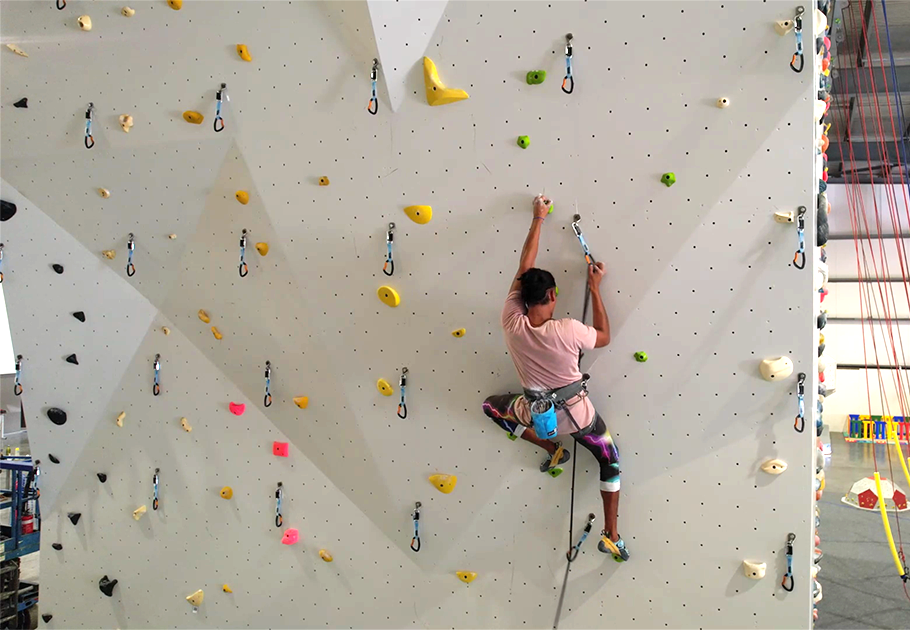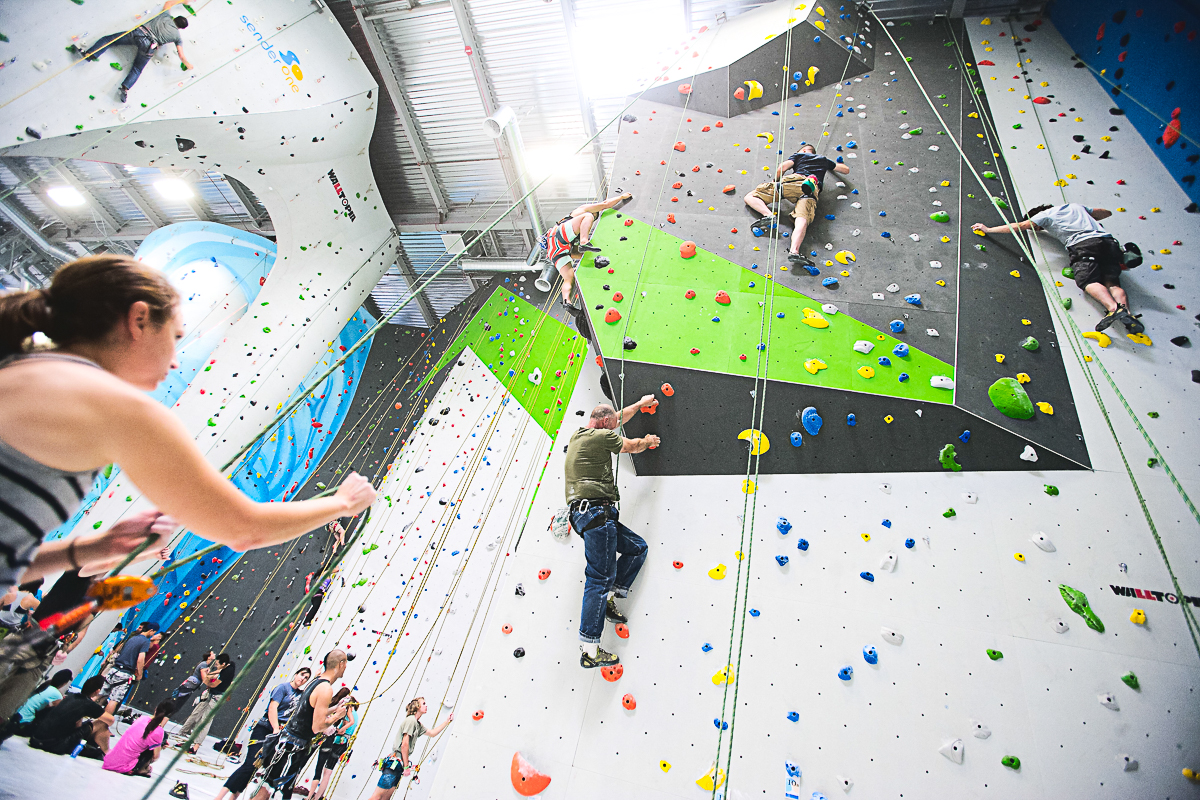Rock Climbing 🧗
Rock climbing is a sport in which participants climb up, across, or down natural rock formations or artificial rock walls. The goal is to reach the summit of a formation or the endpoint of a usually pre-defined route without falling. Rock climbing is a physically and mentally demanding sport, one that often tests a climber's strength, endurance, agility and balance along with mental control. Knowledge of proper climbing techniques and the use of specialized climbing equipment is crucial for the safe completion of routes. Because of the wide range and variety of rock formations around the world, rock climbing has been separated into several different styles and sub-disciplines, such as scrambling, bouldering, sport climbing, and trad (traditional) climbing another activity involving the scaling of hills and similar formations, differentiated by the rock climber's sustained use of hands to support their body weight as well as to provide balance. Rock climbing competitions have the objectives of either completing the route in the least amount of attempts or attaining the farthest point on an increasingly difficult route. Indoor rock climbing is typically split into three disciplines. These disciplines are bouldering, lead climbing, and top roping. Click here to learn more.
Indoor Climbing
-
 Bouldering is a form of free climbing that is performed on small rock formations or artificial rock walls without the use of ropes or harnesses.
While bouldering can be done without any equipment, most climbers use climbing shoes to help secure footholds, chalk to keep their hands dry and to provide a firmer grip, and bouldering mats to prevent injuries from falls.
Unlike free solo climbing, which is also performed without ropes, bouldering problems (the sequence of moves that a climber performs to complete the climb) are usually less than six metres (20 ft) tall.
Traverses, which are a form of boulder problem, require the climber to climb horizontally from one end to another.
Artificial climbing walls allow boulderers to climb indoors in areas without natural boulders.
Bouldering is a form of free climbing that is performed on small rock formations or artificial rock walls without the use of ropes or harnesses.
While bouldering can be done without any equipment, most climbers use climbing shoes to help secure footholds, chalk to keep their hands dry and to provide a firmer grip, and bouldering mats to prevent injuries from falls.
Unlike free solo climbing, which is also performed without ropes, bouldering problems (the sequence of moves that a climber performs to complete the climb) are usually less than six metres (20 ft) tall.
Traverses, which are a form of boulder problem, require the climber to climb horizontally from one end to another.
Artificial climbing walls allow boulderers to climb indoors in areas without natural boulders.
-
 Lead climbing is a climbing style, predominantly used in rock climbing.
In a roped party one climber has to take the lead while the other climbers follow.
The lead climber wears a harness attached to a climbing rope, which in turn is connected to the other climbers below the lead climber.
While ascending the route, the lead climber periodically connects the rope to protection equipment for safety in the event of a fall.
This protection can consist of permanent bolts, to which the climber clips quickdraws, or removable protection such as nuts and cams.
One of the climbers below the lead climber acts as a belayer.
The belayer gives out rope while the lead climber ascends and also stops the rope when the lead climber falls or wants to rest.
Lead climbing is a climbing style, predominantly used in rock climbing.
In a roped party one climber has to take the lead while the other climbers follow.
The lead climber wears a harness attached to a climbing rope, which in turn is connected to the other climbers below the lead climber.
While ascending the route, the lead climber periodically connects the rope to protection equipment for safety in the event of a fall.
This protection can consist of permanent bolts, to which the climber clips quickdraws, or removable protection such as nuts and cams.
One of the climbers below the lead climber acts as a belayer.
The belayer gives out rope while the lead climber ascends and also stops the rope when the lead climber falls or wants to rest.
-
 Top rope climbing (or top roping) is a style in climbing in which the climber is securely attached to a rope which then passes up, through an anchor system at the top of the climb, and down to a belayer at the foot of the climb.
The belayer takes in slack rope throughout the climb, so that if at any point the climber were to lose their hold, they would not fall more than a short distance.
Top-roping is often done on routes that cannot be lead climbed for one reason or another.
Most top-rope anchors can be reached through non-technical means, such as by hiking or scrambling to the top of the cliff.
It is the most common style used at indoor climbing walls and is also used in situations where other methods would be unsafe or environmentally damaging.
Top rope climbing (or top roping) is a style in climbing in which the climber is securely attached to a rope which then passes up, through an anchor system at the top of the climb, and down to a belayer at the foot of the climb.
The belayer takes in slack rope throughout the climb, so that if at any point the climber were to lose their hold, they would not fall more than a short distance.
Top-roping is often done on routes that cannot be lead climbed for one reason or another.
Most top-rope anchors can be reached through non-technical means, such as by hiking or scrambling to the top of the cliff.
It is the most common style used at indoor climbing walls and is also used in situations where other methods would be unsafe or environmentally damaging.